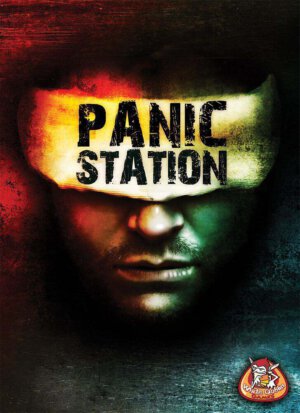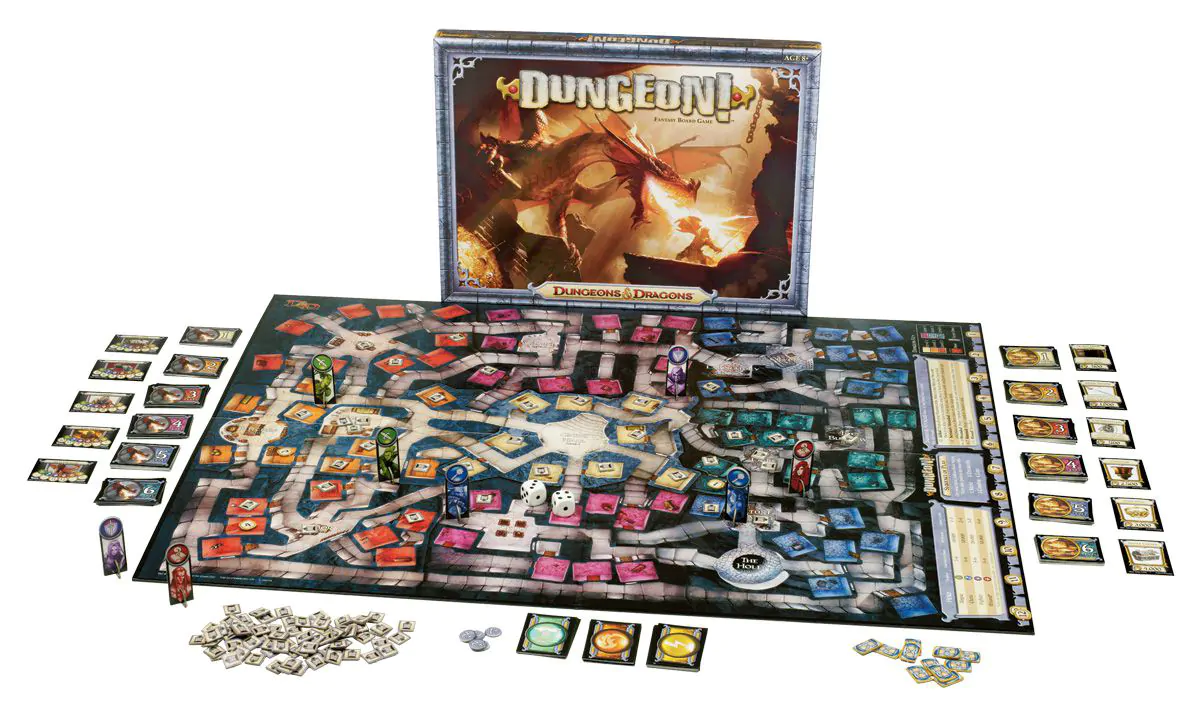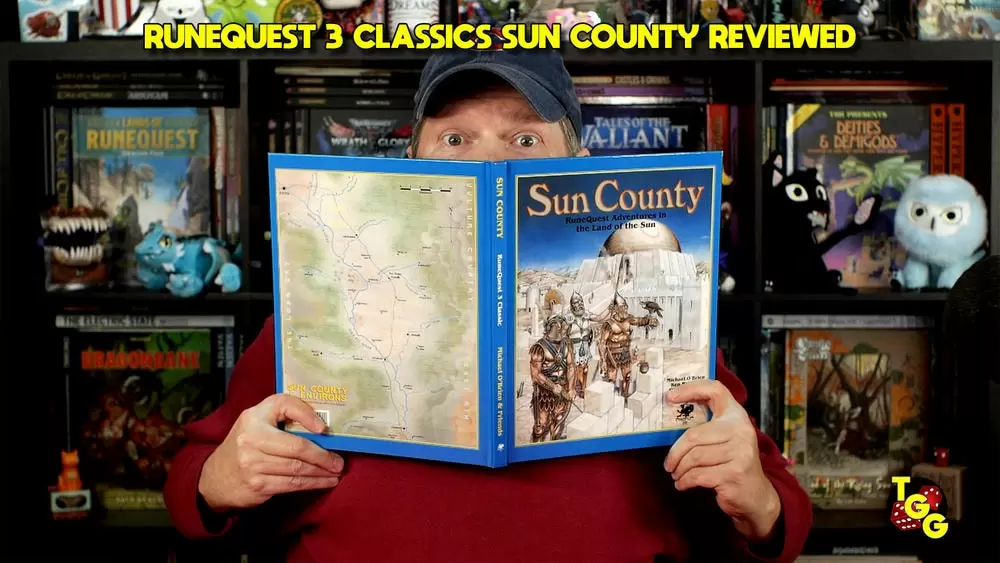Publisher: Stronghold Games
Designer: David Ausloos
Artists: David Ausloos and Hans-Georg Schneider
Year: 2011
Players: Four to six players
Ages: 10+
Playing Time: 30 to 40 Minutes
Genre: Semi-cooperative science fiction game
MSRP: $29.95
Panic Station joins the ranks of other excellent co-op traitor games like Shadows Over Camelot, Battlestar Galactica, and The Resistance. What drew me to the game though, was the thematic similarity to a movie that I just loved. In fact, the title of this post comes from the movie. John Carpenter’s The Thing from 1982 featured a bearded Kurt Russell, along with a group of scientists working at a base in Antarctica, facing off against a horrible parasite alien creature that could take over the bodies of the men to spread itself through the base. Friends quickly became enemies as no one could be sure who was infected and who wasn’t.
The theme of Panic Station is very similar. A group of players enter an army base to explore and destroy an alien parasite that has invaded the base. One of the players will become infected by the host secretly as the game begins or within the first few turns. The host’s mission is to infect the other players, who in turn try to infect other players, until only infected players remain. The human’s goal is to explore the entire base and find the hive of the 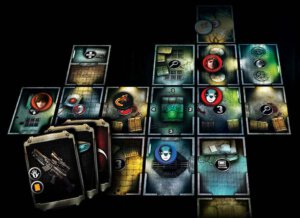
Let me interrupt first here to say that you should go download the new version of the rules from the Stronghold Games website. There were several tweaks to the game and some clarifications that make a difference in the play. Don’t make the same mistake that I did, because there were no instructions on how to put the stickers on the wooden tokens. I ended up putting some of them on wrong and had to peel them off and fix them. The new rules tell you how to put the stickers on. The nice thing is that this game was only recently released, and there are already new rules available. This shows that Stronghold and David the designer were right on top of any problems and corrected them quickly.
Panic Station is for 4-6 players, and six is better than four. The more, the better. Everyone gets two player cards and discs in a chosen color, two check cards (one for positive infection, one for negative infection), and three infection cards (also in the player’s color). After some manipulation of the deck to ensure that the host card is near the top of the search deck and the hive card is near the bottom of the exploration deck, the game is set to go.
Every player has two characters, a human and an android. The android is the only one who can shoot a gun, and they can’t even do that until you find some ammo in the base. This is explained in the new version of the rules. Apparently, the ammo brought by the team is too weak to penetrate the shells of the parasites. The only way to hurt them is by finding the special thermo-nuclear ammo developed by the now extinct team originally on the base. This ammo is too dangerous to be used by humans, so only the androids can use it to kill the parasites. Make sense now? Excellent. I had a tough time resolving this in my head thematically, and the new rules wrapped it up nicely.
In addition to the three infection cards, you were also dealt two additional cards from the search deck. Your main priority is to get some gas cans, only they can stop the alien infestation.
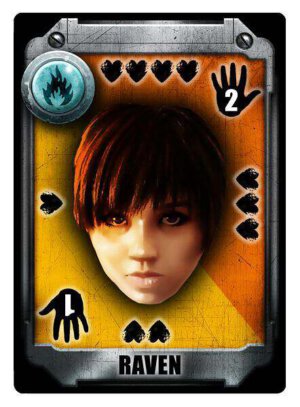
That’s a gloss over of the rules so that we can get to the meat of the game, the infection mechanic. At the start of the game each player has three infection cards in their hand, plus two other random cards from the search deck. One of the players will most likely have the host card and is looking to infect the other players.
The way this works is that each time a player’s character token enters a room with another player’s character token, they have to trade a card face down. If you are the host, you can pass one of your infection cards to the other player in the trade. If they pass a gas can to you, then they are not infected, but if they pass any other card they are infected and are now on the host’s team. In future turns they will try to trade one of their own infection cards with another player, infecting them too.
The players can say whatever they want, as long as they don’t reveal the cards they received. This leads to a lot of “Hey, he tried to infect me!” shouts, and the host needs to really rely on their acting ability to convince the players otherwise. If one of your characters is infected, then they are both infected. Thematically there is some sort of bio-connection between the human and his android counterpart, and in game play it makes a lot of sense.
You can avoid trading by only one means, by attacking the other player. The characters each have four points of health, which you track by rotating the cards. Players can attack each other and eliminate their characters rather than dealing with the whole “Are you infected” problem. You need ammo though. This also explains when each player has two characters. If one is killed you still have one more to try to win. If both are eliminated, then you are out of the game. The game is short enough that this doesn’t really make a difference.
You can pass a gas can card to avoid being infected, but don’t forget you need three gas can cards in order to burn down the hive and win the game, so you can’t give them all away.
The infected players have to manage their cards well. If you run out of infection cards in your color, then you cannot infect anyone else and must resort to a more violent solution, or free as many parasites as you can to 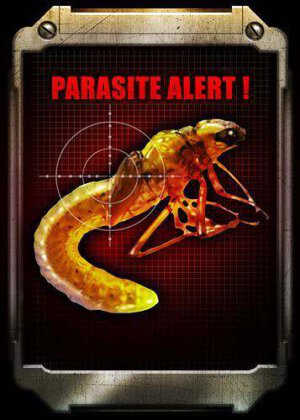
There is only one way to identify if someone is infected or not. There is a heat scanner in the computer system. If the players can find and activate a computer terminal, then you can scan everyone in the base. All of the players place the status card indicating whether or not they are infected on the Host Check board. The leftover cards go in another stack. Then they flip over the cards one by one, and this will let you know how many people are infected.
If you get lucky and find a rare portable heat scanner, then you can scan a specific individual to check them.
What this game boils down to is that it is what you make of it. The rules can be tricky to grasp at first, and if someone screws up whether or not they are infected it can ruin the whole game. For example, in our first game, one of the players got confused as to whether or not she was infected and had to ask for help, which let us know who the host was early in the game and it made a distinctive difference on how the rest of the game was played out. Bad acting can blow it too, but by now many of us are familiar with the traitor mechanic and know who can handle it and who can’t. It says the game is for ages 10 and up, but I think 10 years is too young. It is best played with young adults and older in my opinion.
If you can get a good group together, this is a masterful game. Generally, the group you use to play other hidden traitor games or people that are used to playing Werewolf will do fine. There are different strategies that can be explored, and everyone gets better as they play. The tension can get high, the plays come fast and furious, and it is a richly thematic good time. It took me a few plays to find a group that it worked well with but, once I did, it was excellent.
[rwp-review id=”0″]
- A Dungeon Delve for Kids?: A Review of Dungeon! - Oct 24, 2022
- Better, Stronger, Faster | Descent: Journeys in the Dark Second Edition Reviewed - Oct 23, 2022
- Your Planet is Doomed!: Invasion from Outer Space Reviewed - Oct 22, 2022


